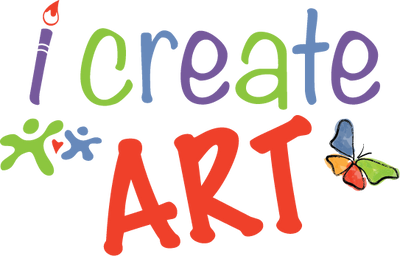For artists of any age, learning to draw a landscape is always fun. Get inspired to start drawing landscapes!
In art, the term "landscape" refers to any depiction of a natural scene, such as mountains, forests, or bodies of water. Landscape paintings are some of the oldest and most popular works of art, dating back to the caves of Lascaux. Any child can learn how to draw landscapes with any kids' art box that features this exciting art method.
Landscape paintings are still incredibly popular, and with good reason. They offer a beautiful and serene view of the world, and can be an excellent addition to any art collection. There are some things you should keep in mind.
- First, pay attention to the overall composition of the scene.
- Second, use light and shading to create depth and perspective.
- Third, don't forget the details - trees, rocks, and other features.
- Fourth, use color to create mood and atmosphere.
- Fifth, practice, practice, practice!
What is a landscape
A landscape is nature viewed as a whole - a patchwork of fields, forests, rivers, and mountains. It is a tapestry of colors and textures that come together to form a natural scene.
People have been fascinated by landscapes for centuries. Artists have captured the beauty of landscapes in paintings and photographs, while writers have described them in prose and poetry. Landscapes have also been an important source of inspiration for musicians and filmmakers.
There are many different types of landscapes, from the rugged mountains of the Alps to the gentle rolling hills of the countryside. But they all share one common trait: they are places where we can appreciate the beauty of nature.
What makes a good landscape drawing?
There are many factors that go into making a good landscape drawing. The most important elements are composition, value, and color.
Composition is the arrangement of the different elements in the drawing. The best compositions are usually simple and have a clear focal point. The elements should also be arranged in a way that leads the eye through the drawing.
Value is the lightness or darkness of the different elements. Good value contrast is important for making the drawing read well. A good way to create value contrast is to use light and dark colors.
Color can also create contrast and add interest to a drawing. Landscape drawings often use a limited color palette to create a feeling of calm. However, you can also use bright colors to add drama to a drawing.
To create a good landscape drawing keep few things to keep in mind:
- Use a reference: A good landscape drawing should be based on a reference photo or real-life scene. This will help you capture the correct proportions and details of the landscape.
- Add interesting elements: A good landscape drawing should have some interesting elements that make it stand out. This could be a river, mountains, trees, or anything else that adds depth and dimension to the drawing.
- Use shadows and highlights. They can add a lot of depth and realism to your drawing.
What are some different types of landscape drawings?
There are many different types of landscape drawings, each with their own unique style and purpose. Some artists focus on scenes of nature. Others may choose to capture the vastness and grandeur of the landscape in a more abstract way. Here are a few of the most popular types of landscape drawings:
- Realistic landscape drawings: These drawings attempt to capture the scene as realistically as possible, down to the smallest details.
- Impressionistic landscape drawings: These drawings focus on capturing the overall feeling or mood of the landscape, rather than the details.
- Abstract landscape drawings: These drawings abstract the landscape into geometric shapes and colors, often with little to no recognizable features.
No matter what type of landscape drawing you prefer, the important, choose a style that you enjoy and that suits your purpose.
Other types of landscape drawings are:
- Line drawings: Line drawings are the simplest type of landscape drawing. They are usually done in black and white, and they only use lines to create the image. Line drawings are often used for quick sketches or for creating detailed plans.
- Renderings: Renderings are more complex than line drawings. They usually include color and shading, and they can be done with either pencils or computers. Renderings are often used for presentation boards or for marketing materials.
- Photorealistic drawings: Photorealistic drawings are the most complex type of landscape drawing. They are created to look exactly like a photograph, and they can take a long time to create.
Some benefits of landscape drawings
There are many benefits to drawing landscapes. For one, it can help you to better appreciate the natural world around you. It can also be used as a form of creative expression, allowing you to explore your personal interpretation of the landscape. Additionally, drawing landscapes can help you to develop your skills in perspective and observation.
For the viewer, landscapes can provide a sense of peace and calm. It can help escape from the hustle and bustle of everyday life.
Whether you are a beginner or a seasoned artist, drawing landscapes can be a rewarding experience. So next time you are outdoors, take a moment to appreciate the scenery and perhaps even try your hand at capturing it on paper.
Summary
In conclusion, there are a few key things to keep in mind when landscape drawing.
- First, don't be afraid to experiment with different mediums and techniques.
- Second, pay attention to drawing the basic shapes of the landscape first, then adding details later.
- Lastly, take your time and enjoy the process! In conclusion, landscape drawing is a challenging but rewarding endeavor.
Here are some landscape art kits from I Create Art Box that you may find enjoyable. If you need more suggestions or have any questions, please contact us.
